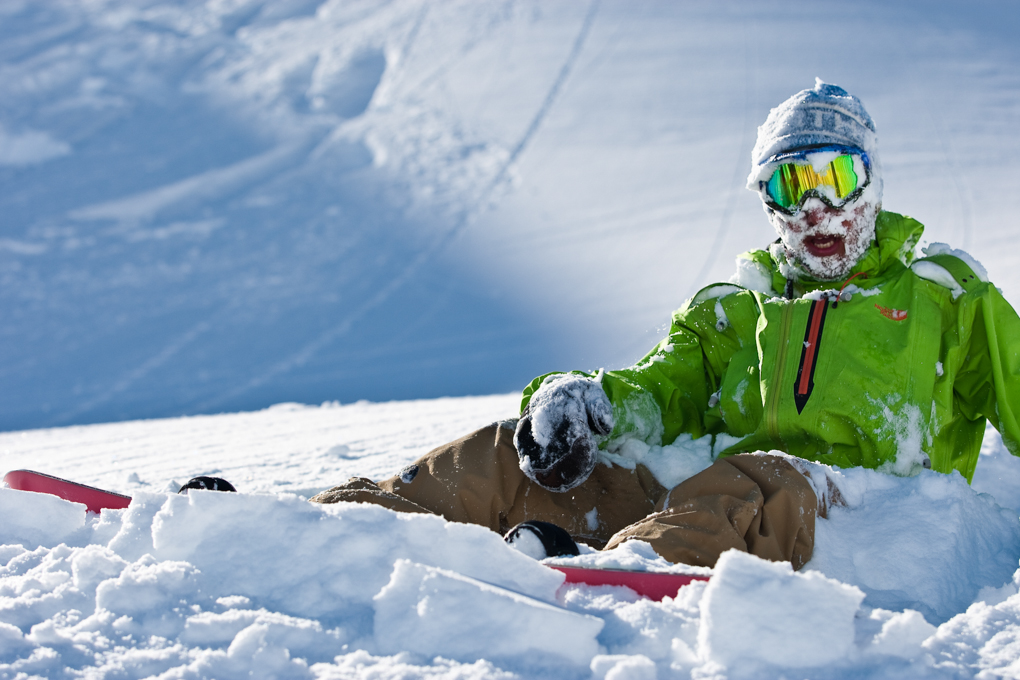
If you’re riding off-piste in areas where you’re making decisions about the avalanche risk, always have someone watching your ride from a safe vantage point where they can see all of the descent. If you’re riding one at a time (as you should be in this situation) the spotter can indicate when it is safe for the next rider to drop in.
Stop in a safe spotMany avalanches are triggered by a group of riders stopping above a slope and overloading it from above as they examine it. A typical scenario sees one rider stop on top of a convex roll-over to check out the slope below. The next rider follows suit and so on until now all the group are standing on the ‘convexity’ – the point of most tension in the snowpack and beyond the shear point of the slab. Try to gain vantage points where you can look into a slope from the side.
Ride until clear and safeAt the bottom of a run, make sure you are clear of any danger from above before stopping. Ideally you want to be out of the path of any avalanche but close enough to offer assistance to riders still on the slope if anything was to happen.
Pitching and planningOn a steep or long slope it is wise to break the descent down into pitches; this allows everyone to keep in contact and enables you to gradually check out the descent. It also avoids anyone getting swept off the mountain by slough created by the rider following them. Establish ‘stopping points’ which are out of the line of fire from above, and ride one at a time where necessary.
High ground is good ground!In general, high ground is safe ground i.e. following ridgelines up or down is much safer than following gullies. Avalanches take the line of least resistance and so will flow down and be concentrated in gullies. High points also have a point of lesser angle on the top, which is safer for stopping and makes a good vantage point for checking things out. Think ‘high ground is good ground’ when planning your escape lines and stopping spots.
Spread out when traversing or hiking a slopeAlthough turning down a slope exerts more pressure on it than hiking or traversing, you must be careful not to overload one spot on the way into a line. Simply spread out and keep moving as a team, and make sure that if one person stops you all stop – so as not to catch up and cause bunching.
Don’t follow gullies!Many people get caught out following gullies. Gullies are streams in the summer and probably come to waterfalls or constrictions which are hard to pass and have steep sides. They are difficult to get out of, and once you’re in there they keep drawing you in until retreat is sometimes impossible. I’m sure there are many people reading this that know what I’m talking about here! Not really a group management issue but a pretty important rule and super simple.
Think ‘safety in numbers’Make sure everyone has all the right kit and knows how to use it. Make sure everyone has the emergency phone numbers and a good idea of where they are and where you’re going. Tell a friend who’s not in the group where you’re heading and when you should be back.





